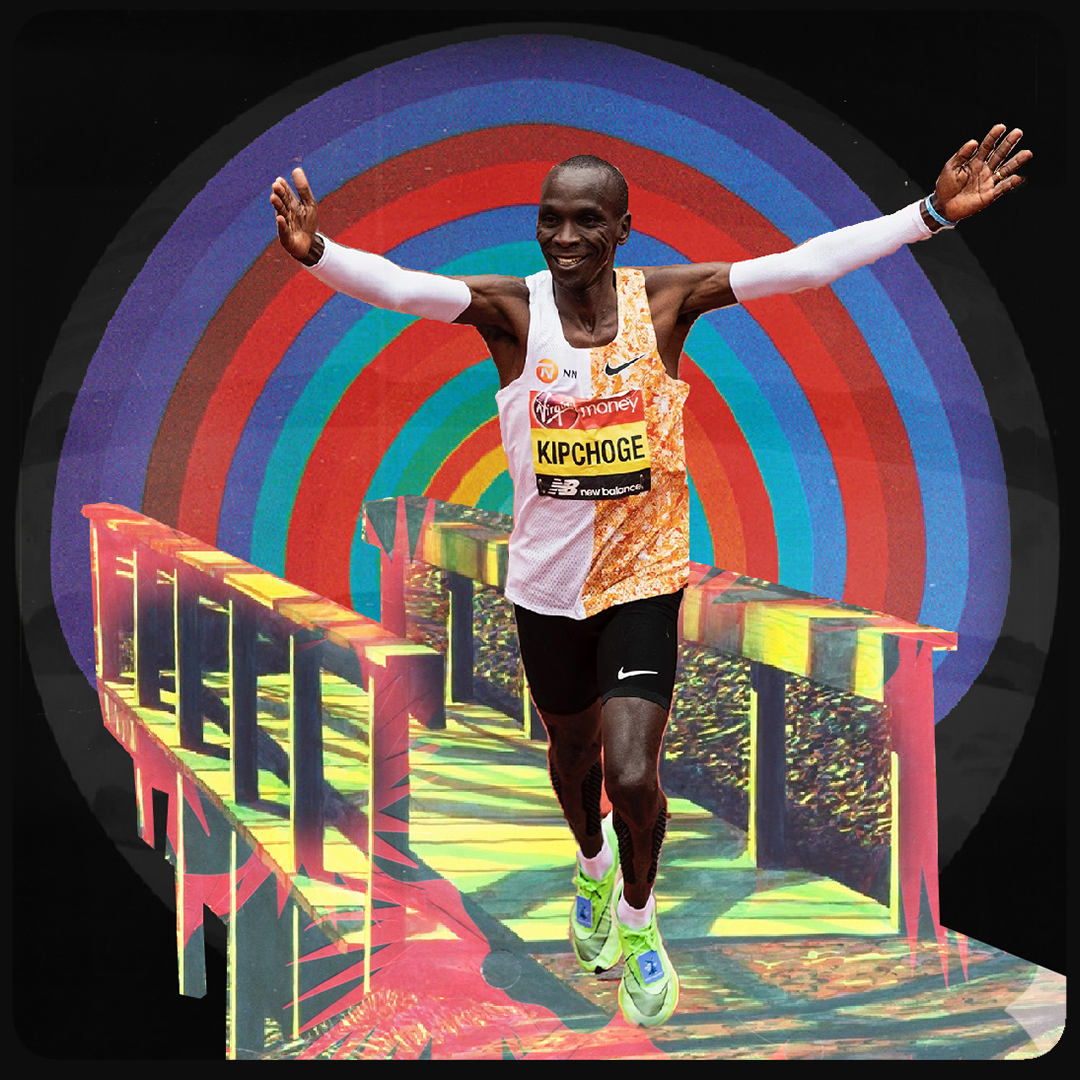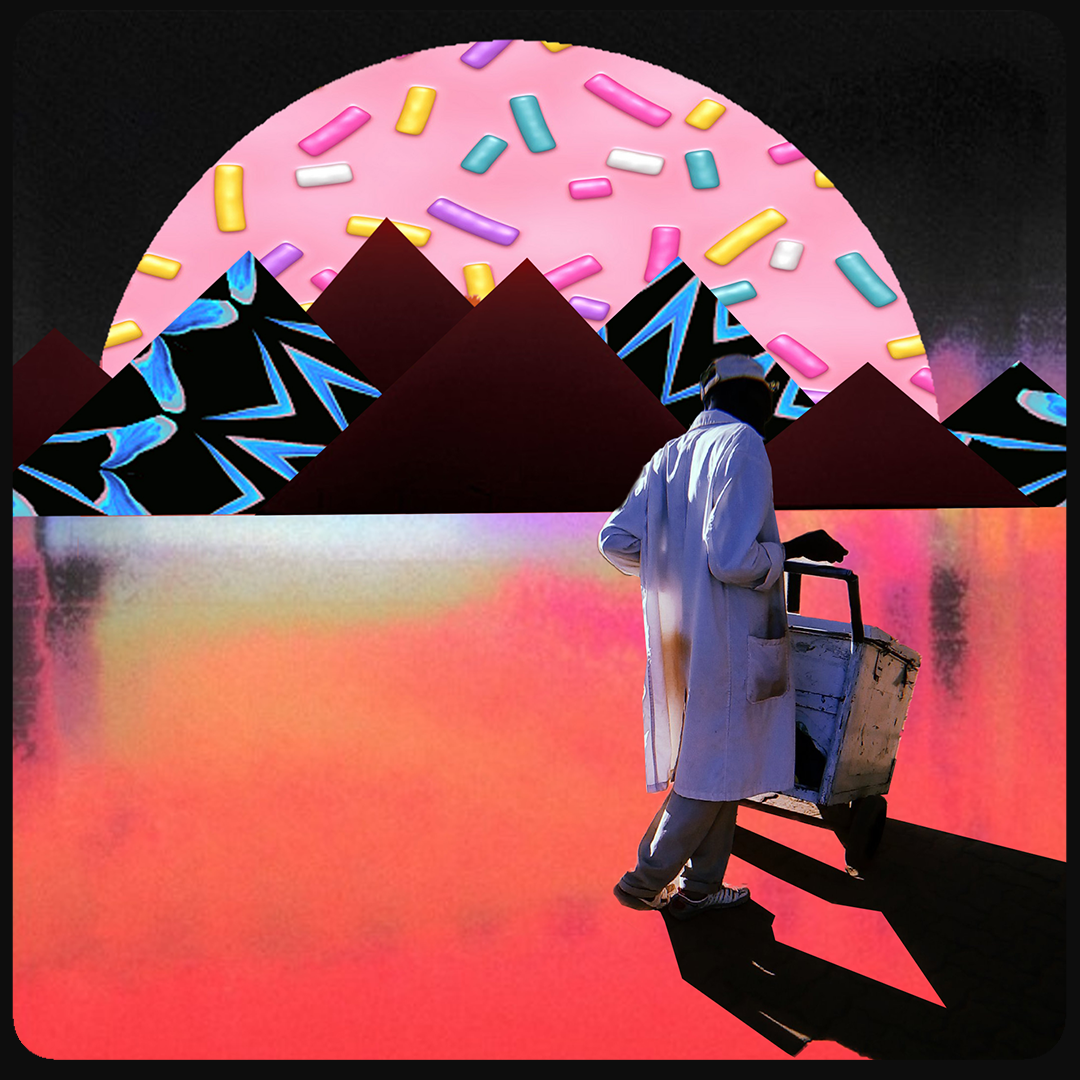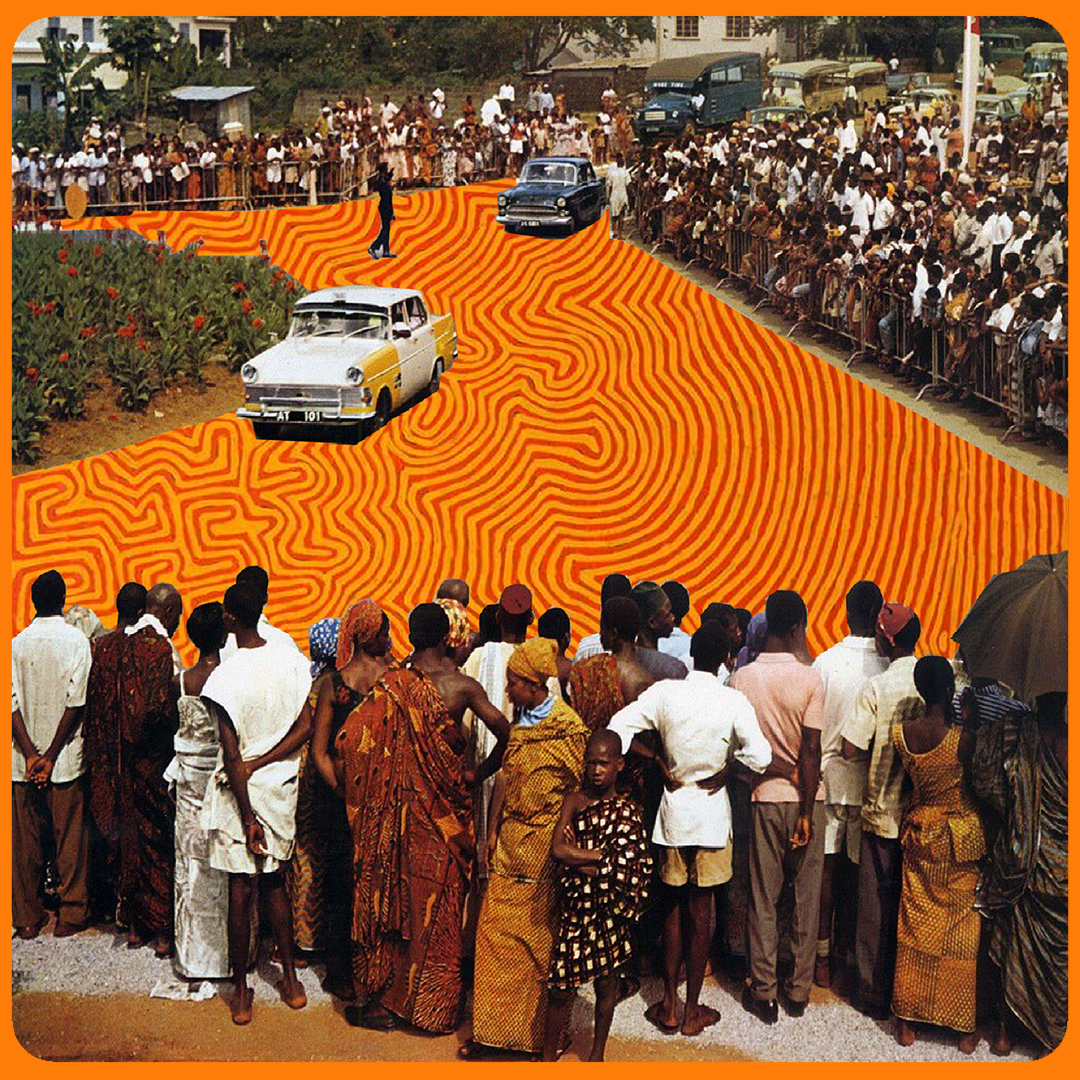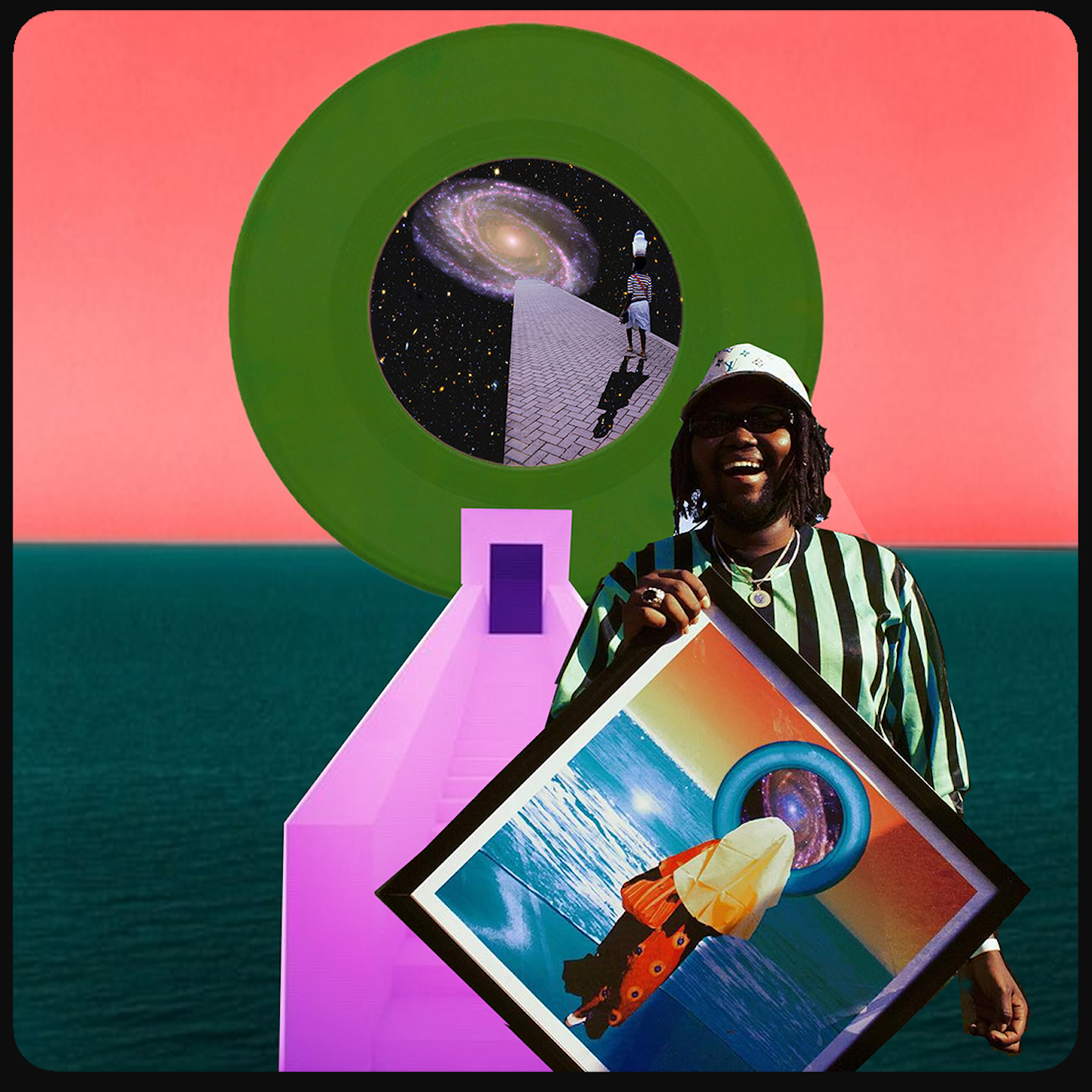David Kipkoech vividly remembers his first interaction with art. It was the late 90s and his uncle owned a record store in Nandi County, a verdant district in the west of Kenya. David would spend endless hours in the store, digging through crates of old records and cassette tapes of Kenyan artists like African Eagle Band, Hodi Boys, the Mushrooms, Daudi Kbaka and Ayub Ogada – an eclectic mix of liquid soul, luo benga, and Swahili afrobeat. The bright, beautifully designed album covers left a deep imprint, triggering an impulse to experiment with making collages.
This didn’t go unnoticed at school. In seventh grade, his science teacher — aware of David’s artistic inclinations — asked him and his friends to work on a mosaic painting. “I remember chopping pieces of different color tiles, drawing the outline of three marathon runners and piecing them together as an artwork,” says David. “It was like a huge puzzle. After that we showcased it at a local hospital in Mombasa. The whole experience was astounding!”
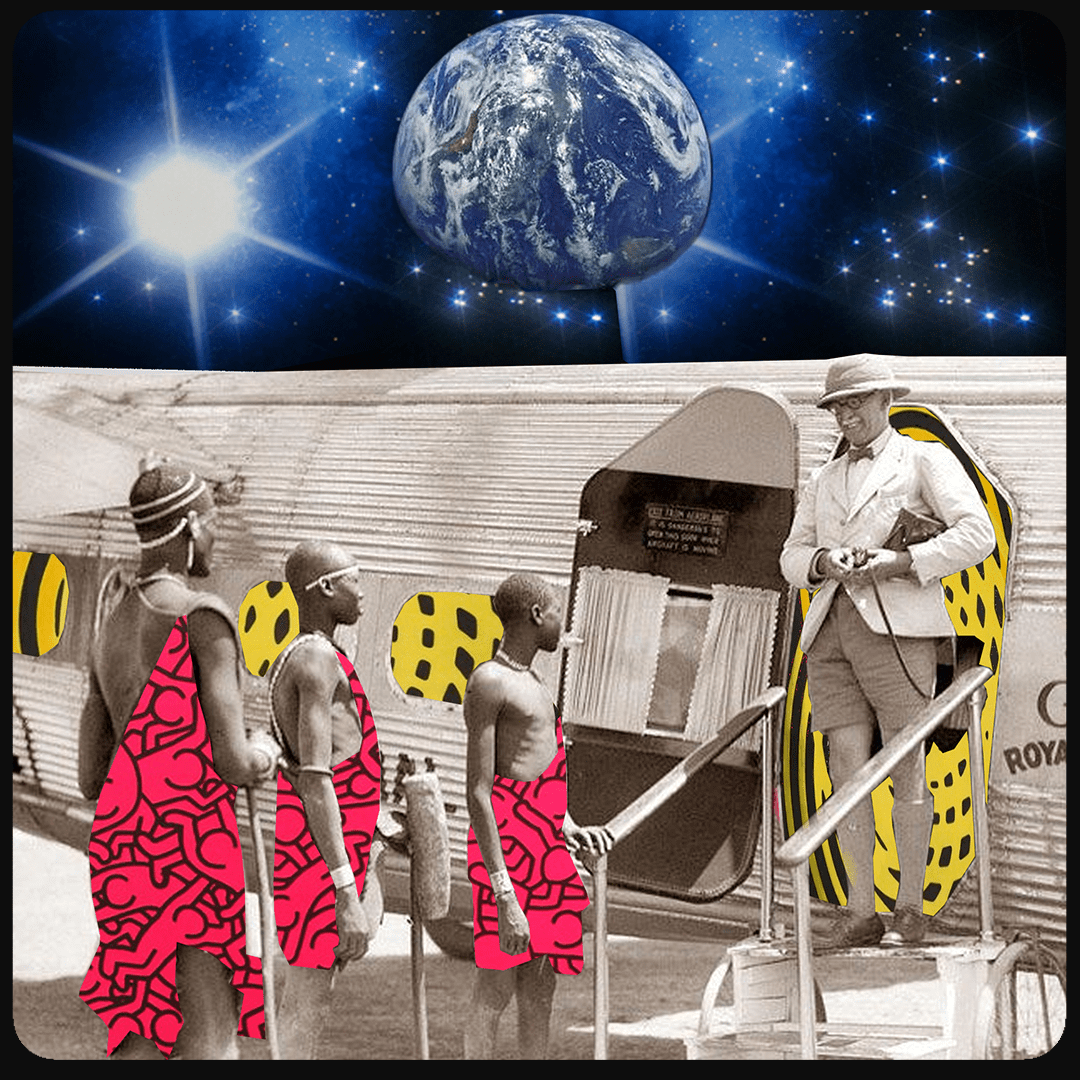
His love for art was further encouraged by his mum, who bought him his first Kodak camera, which he used to capture family memories. “I remember playing around with cutting-out photographs when I was younger – I guess that sparked my love for collages.” From there, David’s style grew increasingly associative, mainly inspired by his own observations. “Growing up in Kenya, studying arts is not something that is generally very supported, so a lot of my work comes from just doing my own research and following my imagination.”
David is quite the multidisciplinarian – though he defines himself as an art director, his practice stretches to include photography, video and fashion. He usually makes collages from photos he has either taken on his phone or camera, which he then assembles to create surreal artworks and motion graphics, all deeply rooted in afrofuturism. Think a child carrying a jerry can on his head while walking on an endless staircase into the cosmos, or a colonist disembarking from a plane to address a group of Maasai tribesmen against an outer space background.
“In my art, I like to play around with tropes we associate with African history, traditional and cultural aesthetics, and street culture — I then fuse it with a hint of science fiction to create a more advanced narrative of Africa,” he explains. “In afrofuturism, I have found a way to express my culture and ideas, by imagining new, hopeful and advanced futures or worlds. It has helped me to find a way of understanding the past and present, and to create my own parallel realities that are both empowering and effervescent.”
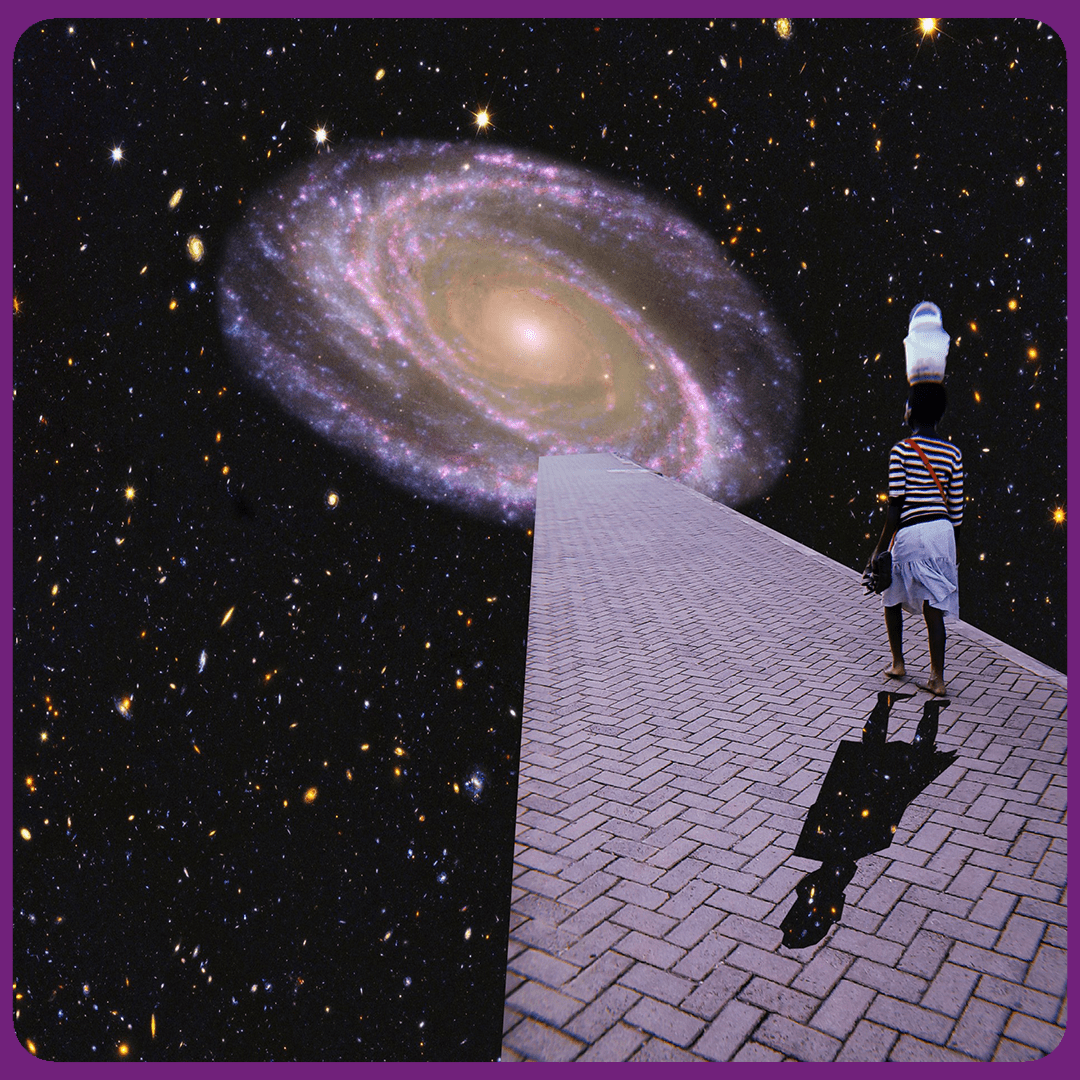
Today, David has swapped the Kenyan plains and highlands for the sprawling city of Nairobi, which he describes as a buzzing place. “It’s a very busy city where everyone is trying to make ends meet. It’s a melting pot, which sometimes bubbles over, but it’s definitely home,” he says. “Over the last few years, an interesting art scene has started to develop in Nairobi. A lot of collaborative efforts have created a sense of community and a feeling of resilience. By sharing resources and nurturing talent and creativity, a culturally rich scene was able to develop.” He cites motion designers Ojin Ngode and Musa Omusi, graffiti artist Bsq Crew, fashion designers Nairobi Apparel District and Chilli Mango ke, artists Xprso and Ea Wave Karun among the many examples.
“In the future, I am super keen to explore new mediums, whether it is in two- or in three-dimensional form,” he concludes. “I also want to get into sustainable fashion — at the moment we have this culture of fast fashion which is a huge contributor to ecological imbalance. I want to raise awareness and work towards the belief system of eco-consciousness.” Keep an eye out on this one.
